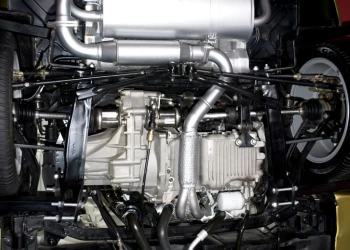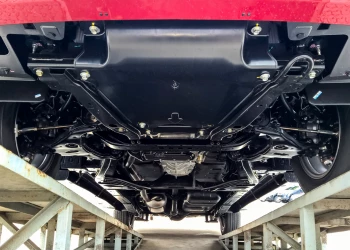Intelligent tire traceability is just over the horizon
Add bookmarkWe recently viewed a video giving a brief description of the “Internet of Tires.” (1) When you looked for the standard rubber-based (or synthetic) belted tire to put on your vehicle a few years ago, the last thing you thought about was “internet connection.” Technology in transportation has changed every aspect of safety, security and sensing.
From embedded chips to stress sensors, the drive train in vehicles is becoming as connected as the dashboard circuitry. Wheel/tire/bearing combinations have sophisticated monitoring systems, and now they will report and record in real time. These are important for safety but also for sustainability and tracking. Anyone who has seen the strips of rubber shed from large truck tires along the roadways is aware that a large amount of rubber and other material is consumed every day.
Nations are now demanding that natural rubber be monitored from source to recycler. The use of petroleum will continue to be contentious, whether in gasoline engines or to produce tires. Better labelling on tires will help that process and add more detail to the value, consistency and reliability of the tire.
It is predicted that fewer people will drive their own vehicle in the coming decades. They will opt for ride sharing, public transportation and non-motorized vehicles. Also, large commercial vehicle use is expected to increase. Trucks continue to lead transportation of goods around the globe. The use of commercial off-road machines will also grow with larger farms using fewer people and more machinery, harvesting in forests and fields becoming more automated and building projects using more machinery.
This will increase the use of larger tires exponentially. These are the tires that are retreaded over and over to save vast amounts of money and materials. The sourcing and tracing of every tire will become more important to environmentalists, trucking companies, builders and public transportation operators.
“The main objective of the tire labelling regulation is to increase the economic and environmental efficiency, as well as the safety, of road transport by promoting fuel efficient and safe tires with low external rolling noise.” – EU tire labelling
Traceability and sourcing
The supply chain for rubber tires is closely monitored since it involves forests, one of the most important natural resources in the world. Plantation rubber is developed with zero net deforestation. Decades ago, lumber companies began a plan of planting and cultivating trees at least equal to the land area of the trees they cut down. However, older conservation principles have not done the trick: millions of acres are lost to the various practices necessary to harvest this product.
Synthetic rubber based on petroleum is just one of dozens of ingredients in a tire. (2) In this article, it is noted that tires are made essentially of these five items:
- Elastomers (natural and synthetic rubber)
- Reinforcing fillers (carbon black and silica)
- Plasticizers (resins, oils)
- Chemicals (sulfur)
- Metal reinforcements (wires, bead wires)
- Textile reinforcements (rayon, aramid, nylon, polyester)
This list creates an involved supply chain, with natural and synthetic products from around the world in the mix. Some, like natural rubber, are harvested from closely watched environments. Others are natural or synthetic materials that are dangerous to the environment when used on roadways, like sulfur and petroleum.
Aside from the use of materials themselves, makers want to be sure the harvesting and transportation of raw materials is done under international guidelines, protecting people and ecosystems. (3) Land use and harvesting procedures are under close scrutiny. No rubber harvesting area is to clear land by burning and no peat land is to be used at all.
The tire industry and its affiliates called for standardization and wants to have a structure for these in place by October, 2018. (4) “The initiative will involve rubber producers, including small holders, processors, traders, tire makers, other rubber buyers, environmental NGOs, and academic institutions,” this report said.
Since natural rubber is farmed and synthetic rubber is made from petroleum, the prices for each are inextricably linked, as are commodity production and sales of each around the world. We will look at the main raw material categories and see how traceability can be achieved, and how the information can be used.
Marketers, resellers and users
The largest and most controversial of the raw materials are elastomers (rubber) and plasticizers (oil and resin). Rubber harvesting is undergoing changes as noted above, but there are also issues of native lands and personnel involved in any forested area. Labelling is expected to warrantee that labor rules and territorial rights have all been followed.
Since the harvesting of rubber and extraction of oil are heavily regulated in most countries, complex treaty and trade obligations are always at work. The top five producers of natural rubber are all in southeast Asia.
The labelling system used for these products is becoming more complex due to regulations. Throughout 2018, the EU will refine a new labelling procedure due to be finalized by 2019. These labelling requirements are also going to include the ability of the product to give information to its users; the distributors, customers and recyclers will all have more responsibility to move the used tire to the right places. This is so important that tire leasing, in which the tire bodies are owned and maintained by a separate organization, is coming into play.
The role of distribution supervisor will fall more toward wholesale agent and less toward the retail seller. Since sensors in the axle, wheel and tire can tell the user a great deal of information about performance, the supervisor of fleet tires can keep data about individual vehicles and their performance. It will be much easier to confirm that one set of tires performed better or worse on a given vehicle and route than another. The comparison will happen as the vehicle is being driven.
A conundrum of movement
The tire’s very qualities that make it safe and reliable are the same qualities that make it fuel inefficient and wasteful. By definition, the tire is the only item on a vehicle that propels it; it is also the only item that physically stops it. Designing a product that is better at both is the manufacturing challenge, but the challenge for testing and data is the ability to follow the tire through every mile of its lifecycle.
Much of the technology for tire monitoring was created to monitor materials fatigue, letting the driver know that the tire is nearing the end of its life or is losing its braking and turning functions. (5) This will actually make tires as valuable after their tread life is gone as when they are new. Intelligent sensors should last for the life of the tire body, not just the tread. Technology that can make tire bodies run for millions of miles will change the used tire dynamic forever.
Some of these sensors measure resistance to rolling a major problem and major opportunity—fuel use is huge to start and roll tires due to their necessary resistance to roadway materials. The rolling tire can recapture, or harvest, some of the kinetic energy that it generates, but this is minimal compared to the energy used to make the tire and move it forward on a vehicle.
Perhaps a better system for keeping track of every tire could be built from the inside out. Instead of pondering very large, expensive systems tying manufacturers and users together, it might work by starting with the individual tire.
For better traceability, one company is working on putting unique and permanent markings on every tire. 4JET Company is a laser engraver and works to put engravings like QR codes on materials that resist such permanent markings. One of these is the rubber tire. (6) Laser engraving a QR code would label each tire as unique and the code can be read with a typical smartphone or other QR reader, the company said.
If this system can be supplied to each manufacturer, every tire would be unique without having paper labels that disintegrate or generic markings that don’t identify the tire. Dating marks will be secondary for manufacturing identity. Users would know exactly which tire to order for replacement but, more importantly, fleet owners will have instant information on every tire body in use. A retreaded tire might get a second QR, identifying every factory retread. The tire will now have a “universal tire identification number,” unique no matter the manufacturer, much like a vehicle identification number, the author said.
As soon as a tire is made in the future, it will have sensors embedded that will mark it at step of its life. It will tell if it is aligned, hot or cold, out of balance or unstable in some way. The rolling tire will supply power to its own sensors through power harvesting, using its own kinetic energy transformed to electricity. More sensors in wheels and axles will add dynamic information to the mix, confirming or contradicting data.
- https://www.silentsensors.com/the-intelligent-tyre/
- https://www.michelin.com/eng/michelin-group/products-services/michelin-tires
- https://s3.eu-west-1.amazonaws.com/psi-dotcom-prd/corporate/2164_English_Version.pdf
- http://www.economynext.com/Standards,_traceability_rules_coming_for_rubber_industry,_Sri_Lanka_forum_told-3-10566-9.html
- https://www.printedelectronicsnow.com/contents/view_breaking-news/2017-04-03/tire-management-system-technology-to-enable-intelligent-tires
- http://4micro.de/wp-content/uploads/2016/12/4SURfaces-EN-5.pdf






















